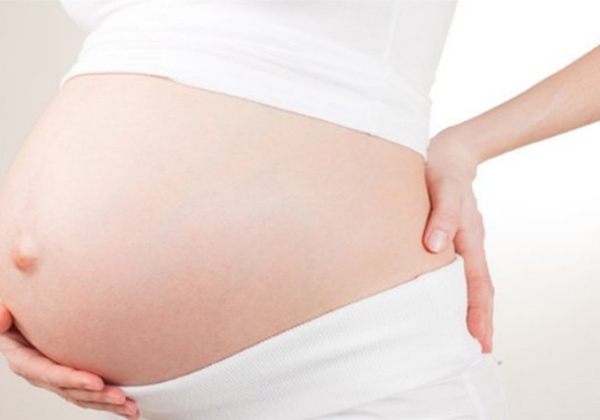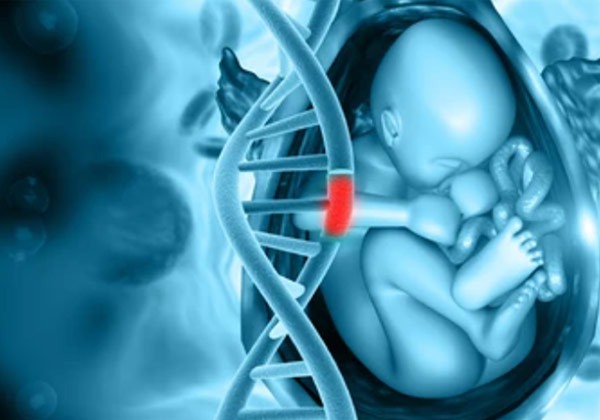代孕母亲是否与婴儿共享血液?

大家好,朋友们!
今天,我们将讨论一个非常重要的话题。许多人问:“代孕母亲是否与婴儿共享血液?”答案是不,但还有更多需要了解的内容。让我们一步一步地解释,让你轻松理解。
代孕母亲是否与婴儿共享血液?
血液分离的科学原理
答案是不。代孕母亲不会与婴儿共享血液。以下是为什么会出现这种情况的详细解释:
胎盘的作用
- 胎盘是一种在怀孕期间形成的特殊器官,它连接着母亲和胎儿。
- 它的主要功能是为婴儿提供营养、氧气和其他必需物质,同时帮助排除胎儿的代谢废物。
- 胎盘还充当一个屏障,确保代孕母亲的血液和婴儿的血液完全分离,它们不会混合。
胎盘如何保护婴儿的血液?
- 胎盘通过一层薄而强大的膜来实现这一功能。这层膜允许小分子(如氧气、葡萄糖和氨基酸)通过,供给胎儿生长所需的养分。
- 然而,它会阻止大分子(如血细胞、蛋白质和DNA)的传递,从而避免母亲和胎儿之间的血液混合。
- 这种机制不仅保护了胎儿的血液系统独立性,还能防止母体血液中的某些有害物质(如病原体或药物残留)传递给胎儿。
- 因此,即使代孕母亲和胎儿之间有密切的生理联系,她们的血液始终保持分离,婴儿的健康和遗传完整性得以保障。
这种精妙的生物设计,正是胎盘被称为“生命的桥梁”的原因所在。

代孕母亲是否与婴儿共享DNA?
妊娠代孕中的DNA关系
- 在妊娠代孕中,代孕母亲不与婴儿共享DNA。
- 婴儿是由其他人的卵子和精子通过体外受精(IVF)形成的胚胎发育而成的。这种技术确保了胚胎的遗传物质完全来自于预期父母或捐赠者,而不是代孕母亲。
- 代孕母亲仅提供了一个温暖而安全的环境,供胚胎生长。她的身体为胚胎提供了必要的营养和氧气,但她的基因并未参与其中。因此,在妊娠代孕中,婴儿的DNA与代孕母亲没有任何直接联系。
传统代孕中的DNA关系
- 在传统代孕中,代孕母亲使用自己的卵子来孕育婴儿。
- 这意味着她与婴儿共享一半的DNA,因为她提供的卵子包含了遗传信息。
- 这种遗传联系使得传统代孕在法律和伦理上更具挑战性。例如,代孕母亲可能被认定为婴儿的“生物学母亲”,这可能导致复杂的亲子关系问题。
- 由于传统代孕涉及更多的法律风险和情感纠葛,许多国家和地区更倾向于支持妊娠代孕,以避免潜在的争议。
表格:代孕母亲是否与婴儿共享血液或DNA?
| 代孕类型 | 共享DNA? | 共享血液? | 原因 |
|---|---|---|---|
| 妊娠代孕 | 否 | 否 | 婴儿由不属于代孕母亲的卵子和精子发育而成。 |
| 传统代孕 | 是 | 否 | 代孕母亲使用自己的卵子,因此共享DNA,但不共享血液。 |
胎盘如何保持血液分离?
胎盘的工作机制
胎盘就像一个过滤器,它允许某些物质通过,但阻止其他物质进入。这种精密的屏障功能确保了婴儿和代孕母亲的血液系统完全独立。以下是它的具体工作方式:
1. 营养和氧气的传递
- 胎盘通过母体血液中的滋养细胞,将营养物质(如葡萄糖、氨基酸)和氧气传递到胎儿的血液中。
- 这些物质通过胎盘的血管网络,经过一层特殊的细胞屏障,最终进入胎儿的血液循环系统,为胎儿提供生长和发育所需的能量。
- 这一过程依赖于母体和胎儿血液之间的高效物质交换,但两者的血液从未直接接触。
2. 血细胞的隔离
- 胎盘的结构设计阻止了血细胞从母体血液进入胎儿血液。
- 即使在某些特殊情况下(如母体和胎儿血型不兼容),胎盘也尽量减少母体抗体对胎儿的影响,但无法完全避免所有风险。
- 这种隔离机制确保了胎儿血液的纯净性,避免母体血液成分干扰胎儿的正常发育。
3. DNA的保护
- 胎盘还起到屏障作用,阻止母体DNA或遗传物质进入胎儿体内。
- 这意味着胎儿的DNA完全由受精卵决定,与代孕母亲无关,从而保证了胎儿的遗传独立性。
胎盘的这些功能不仅维持了胎儿的健康发育,还确保了母体和胎儿之间的生物学界限清晰分明。

为什么这很重要?
对于妊娠代孕的意义
家庭知道婴儿是他们的,因为它与他们共享DNA。
- 在妊娠代孕中,婴儿的基因完全来自于预期父母或捐赠者的卵子和精子。这种明确的遗传联系让家庭感到安心,因为他们知道孩子在生物学上属于自己。
- 此外,代孕母亲仅提供子宫作为孕育环境,并未贡献任何遗传物质。她的健康、营养和生活方式虽然可能对胎儿产生表观遗传影响(如基因表达的变化),但并不会改变婴儿的DNA。
- 因此,这种模式既科学又清晰,能够有效避免法律和情感上的争议。
对于传统代孕的意义
家庭知道代孕母亲与婴儿共享DNA。
- 在传统代孕中,代孕母亲使用自己的卵子,这意味着她与婴儿之间存在直接的遗传联系。
- 这种情况可能引发复杂的法律问题,例如亲子关系认定,以及情感上的挑战,比如代孕母亲是否会对孩子产生更深的情感依附。
- 了解这一点后,家庭可以更好地权衡选择哪种代孕方式更适合他们,并提前做好心理准备。
- 同时,这也提醒他们在签署合同前,必须明确各方的权利和责任,以避免未来的纠纷。
婴儿出生后会发生什么?
胎盘的处理
- 婴儿出生后,胎盘会随之排出体外,这一过程被称为“胎盘娩出”。
- 胎盘在怀孕期间扮演了至关重要的角色,它不仅为婴儿提供营养和氧气,还帮助排除代谢废物。然而,一旦婴儿出生,胎盘的功能便宣告结束。
- 一些家庭会选择保留胎盘,认为它具有象征意义或潜在的医学价值。例如,胎盘中含有丰富的干细胞,可以用于未来的医疗研究或治疗。
- 还有一些家庭选择将胎盘带回家埋葬,视其为生命的象征,表达对新生命的祝福。
婴儿的健康状况
- 在整个怀孕期间,婴儿的血液和DNA都得到了胎盘的保护,因此非常健康。
- 胎盘作为一道屏障,阻止了代孕母亲与婴儿之间的血液混合,同时确保只有必要的营养物质和氧气能够通过。
- 这种高效的过滤机制使得婴儿能够在独立的生物环境中安全发育。
- 此外,胎盘还能帮助抵御某些有害物质的侵入,尽管现代研究发现微塑料等污染物可能对胎儿产生潜在威胁,但胎盘的整体保护功能仍然至关重要。
关于代孕的有趣事实
1. 代孕的安全性
- 每年都有成千上万名婴儿通过代孕成功出生,这得益于现代医学技术的进步。
- 妊娠代孕中,胚胎通过体外受精(IVF)形成,确保了遗传物质的精准匹配,极大降低了生物学风险。
- 此外,代孕母亲在医学和心理上的严格筛选进一步提升了代孕过程的安全性。
2. 胎盘的重要性
- 胎盘是胎儿的生命支持系统,专门为婴儿的生长发育而存在。
- 它不仅能将宝宝和母体分隔开来,保护宝宝的独立性,还能完成胎儿和母体之间的营养、氧气交换。
- 胎盘还分泌黄体激素和乳促素等物质,维持妊娠并促进胎儿健康成长。
3. 代孕母亲的伟大奉献
- 代孕母亲帮助那些因身体原因无法自行生育的家庭实现了梦想,她们的无私奉献让无数家庭得以圆满。
- 这一过程不仅需要身体上的付出,更需要心理上的强大支持,体现了代孕母亲的非凡勇气和爱心。
- 代孕母亲的角色不仅是孕育生命,更是为他人带来希望与幸福的重要桥梁。
通过这些事实,我们更能理解代孕背后的科学与人性光辉。

关于代孕的常见问题
Q1:代孕母亲的血型会影响婴儿吗?
答案是不会。
- 婴儿的血型由受精卵的遗传物质决定,与代孕母亲的血型无关。
- 即使代孕母亲和婴儿的血型不同,也不会对婴儿的健康产生影响,因为胎盘起到了保护作用。
- 胎盘能够阻止母体血液中的大分子抗体(如ABO血型抗体)穿过,从而避免血型不合引发的问题。
- 在极少数情况下,如果代孕母亲是Rh阴性而胎儿是Rh阳性,可能会出现免疫反应,但现代医学可以通过注射抗D免疫血清轻松解决这一问题。
Q2:代孕母亲和婴儿之间有遗传联系吗?
- 在妊娠代孕中,代孕母亲与婴儿之间没有遗传联系。
- 因为婴儿是由其他人的卵子和精子通过体外受精形成的胚胎孕育而成的。
- 在传统代孕中,代孕母亲与婴儿之间有遗传联系,因为她提供了卵子。
- 这种遗传联系使得传统代孕在法律和情感上更具复杂性,需特别注意相关协议和法律规定。
Q3:如果代孕母亲在分娩时需要输血怎么办?
- 如果代孕母亲在分娩过程中需要输血,这只会对她的血液系统产生影响。
- 婴儿的血液系统保持独立且安全,不会受到任何影响。
- 胎盘作为屏障,确保了母体和胎儿的血液分离,即使在医疗干预的情况下,婴儿的血液也不会受到影响。
以上内容详细解答了代孕过程中的常见疑问,帮助读者更全面地理解代孕的科学原理和安全性。
结论
今天我们学到了很多!让我们回顾一下:
- 代孕母亲不与婴儿共享血液。
- 在妊娠代孕中,代孕母亲不与婴儿共享DNA。
- 在传统代孕中,代孕母亲确实与婴儿共享DNA。
- 胎盘保护了婴儿的血液和DNA。
如果你还有更多问题,请咨询医生或代孕专家。他们可以帮助你了解更多!